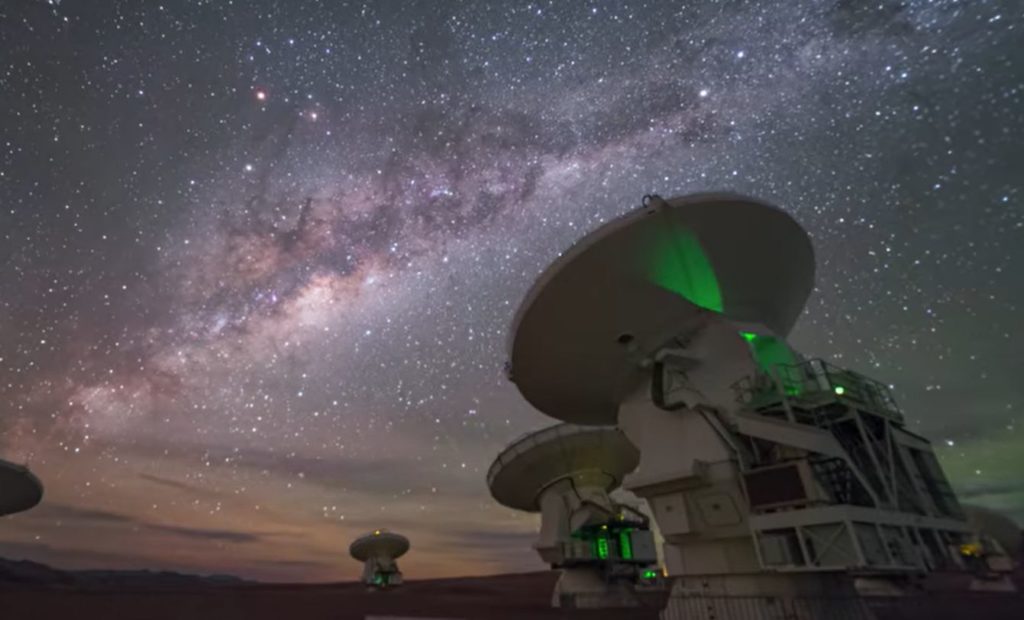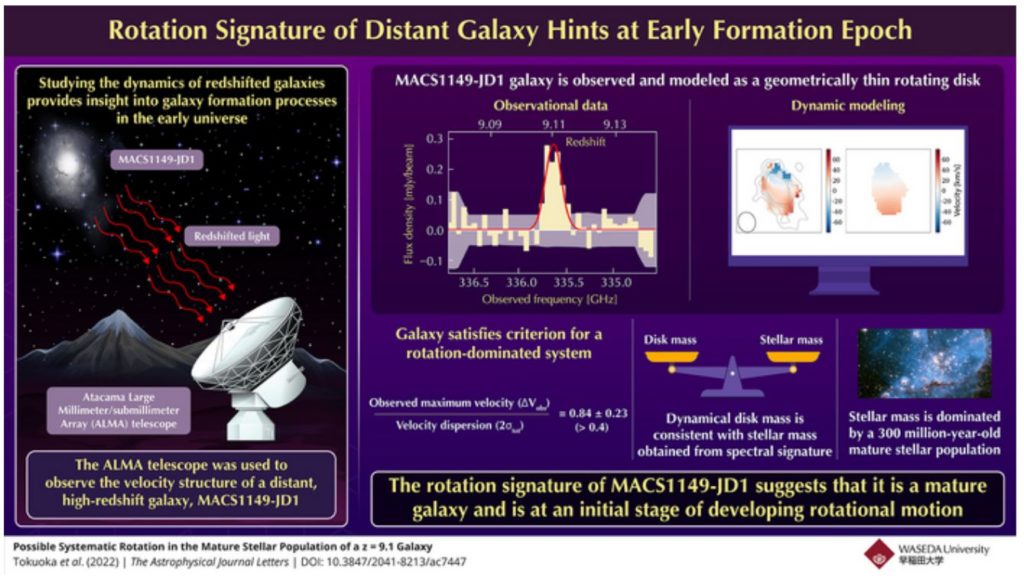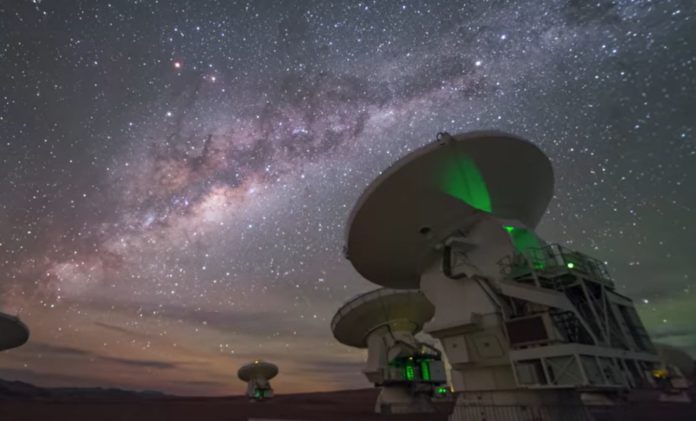Astronomers have been able to find ever-distant galaxies thanks to the development of more powerful and sophisticated telescopes.
These are some of the first galaxies to form in our universe, and as the universe grew, they moved away from us. In reality, a galaxy looks to move away from us more quickly the further away it is.
It’s interesting that we can determine a galaxy’s motion rate and, consequently, its formation date based on how “redshifted” its emission appears. This is comparable to the “Doppler effect,” whereby distant objects emit light that looks to the observer to have been redshifted, or shifted toward longer wavelengths.
For observing such redshifts in galaxy emissions, the Atacama Large Millimeter/submillimeter Array (ALMA) telescope situated in the Atacama Desert of Chile is ideally suited. A group of international scientists, including Professor Akio Inoue and graduate student Tsuyoshi Tokuoka from Waseda University, Japan, Dr. Takuya Hashimoto at the University of Tsukuba, Japan, Professor Richard S. Ellis at University College London, and Dr. Nicolas Laporte, a research fellow at the University of Cambridge, UK, recently observed redshifted emissions of a distant galaxy called MACS1149-JD1 (hereafter JD1).

“Beyond finding high-redshift, namely very distant, galaxies, studying their internal motion of gas and stars,” says Ellis, “provides motivation for understanding the process of galaxy formation in the earliest possible universe.”
Their study’s findings were published in The Astrophysical Journal Letters.
Galaxy formation starts with the buildup of gas and continues when stars are created from that gas. Star formation moves from the galaxy’s center outward over time as a galactic disk forms and the galaxy takes on a specific shape.
Newer stars develop in the rotating disk as star formation proceeds, while older stars stay in the core region. It is possible to ascertain the stage of evolution the galaxy has reached by looking at the age of the celestial objects and the motion of the stars and gas in the galaxy.

Over the course of two months, the astronomers made a series of observations that allowed them to measure small differences in the “redshift” from one part of the galaxy to another. They found that JD1 met the criteria for a galaxy that is dominated by rotation.
Then, they made a model of the galaxy as a spinning disk and found that it fit the observations well. When compared to the Milky Way disk’s rotational speed of 220 kilometers per second, the calculated rotational speed was roughly 50 kilometers per second.
The study also determined that JD1 has a far smaller diameter than the Milky Way, which is 100,000 light-years across, at only 3,000 light-years.
Their finding is significant since JD1 is by far the most distant and, hence, earliest source that has been discovered thus far that features a rotating disk of gas and stars.
The team has been able to outline the progressive growth of rotating galaxies across more than 95% of the course of cosmic history using these observations, together with analogous ones of nearby systems in the academic literature.
In addition, the mass determined from the rotational speed of the galaxy was consistent with the stellar mass previously measured from the galaxy’s spectral signature, and originated primarily from “mature” stars that formed some 300 million years ago.
According to Hashimoto, “this shows that the stellar population in JD1 formed at an even earlier epoch of the cosmic age.”
“The rotation speed of JD1 is much slower than those found in galaxies in later epochs and our Galaxy and it is likely that JD1 is at an initial stage of developing a rotational motion,” adds Inoue.
Astronomers will now use the recently launched James Webb Space Telescope to pinpoint the locations of young and older stars in the galaxy in order to confirm and revise their theory of galaxy formation.
Undoubtedly, there will be more discoveries soon!
Image Credit: ALMA
You were reading: Astronomers detect the most distant galaxy rotation ever observed
